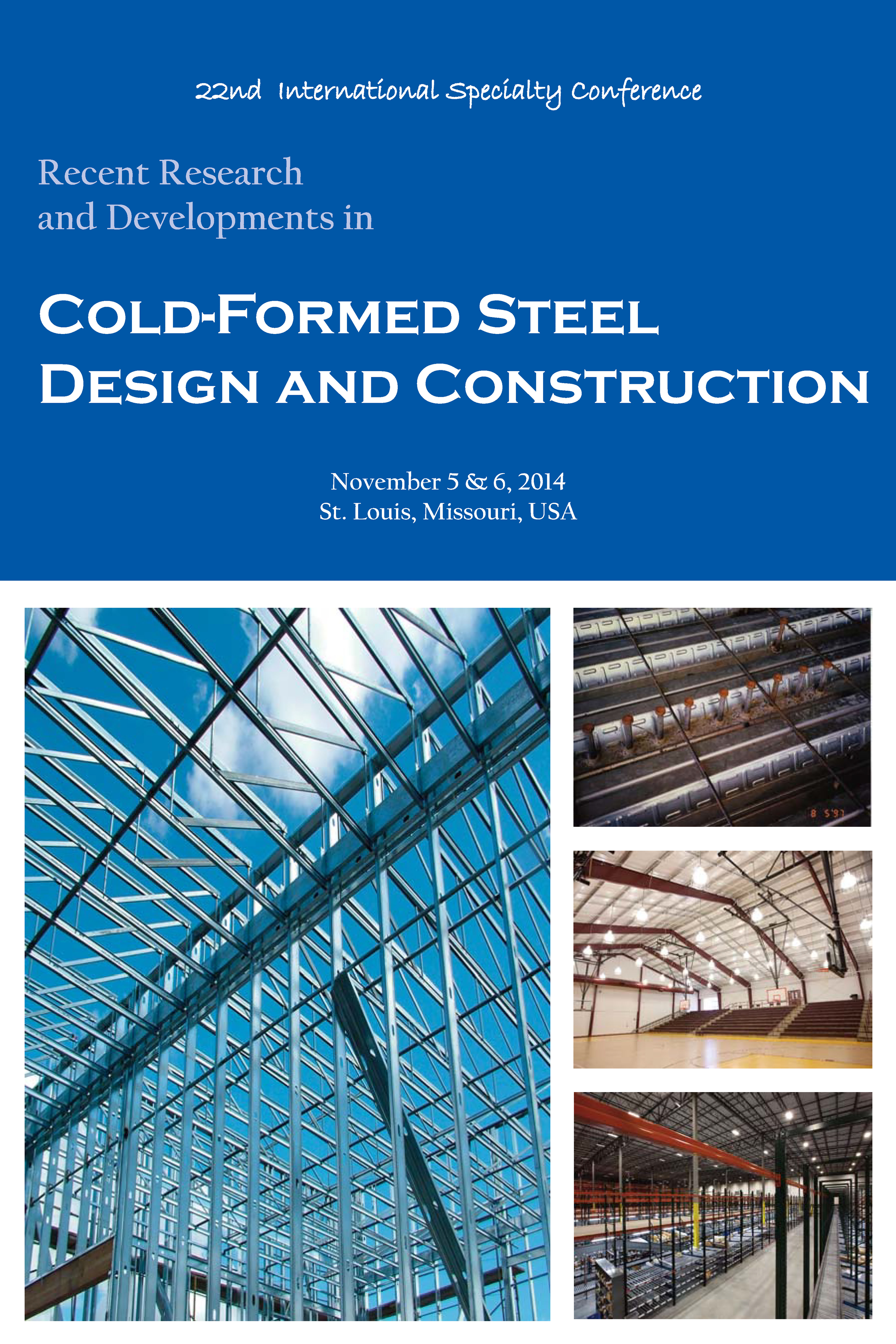Constrained Finite Element Method: Demonstrative Examples on the Global Modes of Thin-Walled Members
Session Dates
05 Nov 2014
Abstract
In this paper a novel method is presented for the modal decomposition of thin-walled members. The proposed method follows the logic of the constrained finite strip method (cFSM), however, polynomial longitudinal shape functions are applied together with a longitudinal discretization. Thus, strips are transformed into multiple shell finite elements. The longitudinal shape functions are selected in such a way that modal decomposition similar to cFSM can be realized, therefore, the new method can conveniently be described as constrained finite element method (cFEM), possessing all the modal features of cFSM, but with significantly more flexible applicability. The method is briefly presented and illustrated by global buckling problems.
Department(s)
Civil, Architectural and Environmental Engineering
Research Center/Lab(s)
Wei-Wen Yu Center for Cold-Formed Steel Structures
Sponsor(s)
Hungarian Scientific Research Fund
Meeting Name
22nd International Specialty Conference on Cold-Formed Steel Structures
Publisher
Missouri University of Science and Technology
Document Version
Final Version
Rights
© 2014 Missouri University of Science and Technology, All rights reserved.
Document Type
Article - Conference proceedings
File Type
text
Language
English
Recommended Citation
Ádány, S., "Constrained Finite Element Method: Demonstrative Examples on the Global Modes of Thin-Walled Members" (2014). CCFSS Proceedings of International Specialty Conference on Cold-Formed Steel Structures (1971 - 2018). 5.
https://scholarsmine.mst.edu/isccss/22iccfss/session01/5
Constrained Finite Element Method: Demonstrative Examples on the Global Modes of Thin-Walled Members
In this paper a novel method is presented for the modal decomposition of thin-walled members. The proposed method follows the logic of the constrained finite strip method (cFSM), however, polynomial longitudinal shape functions are applied together with a longitudinal discretization. Thus, strips are transformed into multiple shell finite elements. The longitudinal shape functions are selected in such a way that modal decomposition similar to cFSM can be realized, therefore, the new method can conveniently be described as constrained finite element method (cFEM), possessing all the modal features of cFSM, but with significantly more flexible applicability. The method is briefly presented and illustrated by global buckling problems.




Comments
The presented work was conducted with the financial support the OTKA K108912 project of the Hungarian Scientific Research Fund.